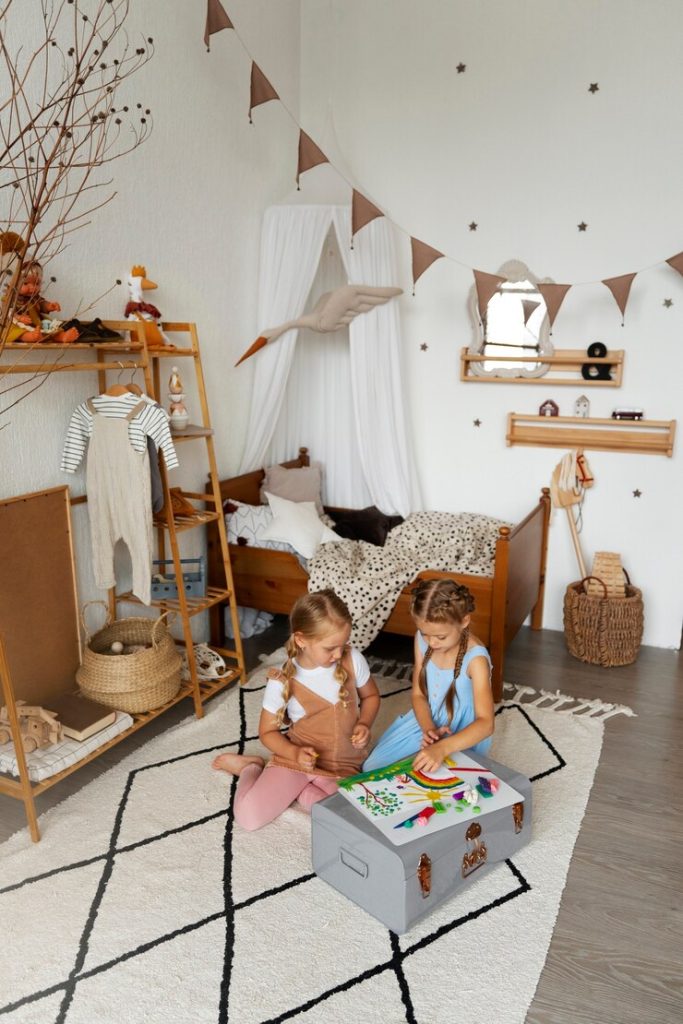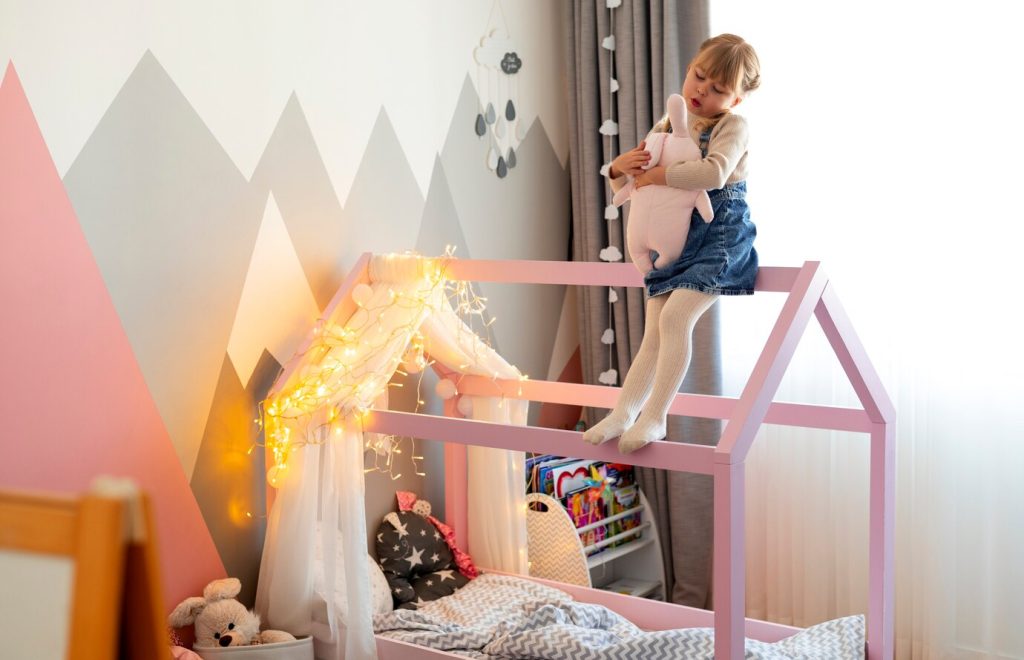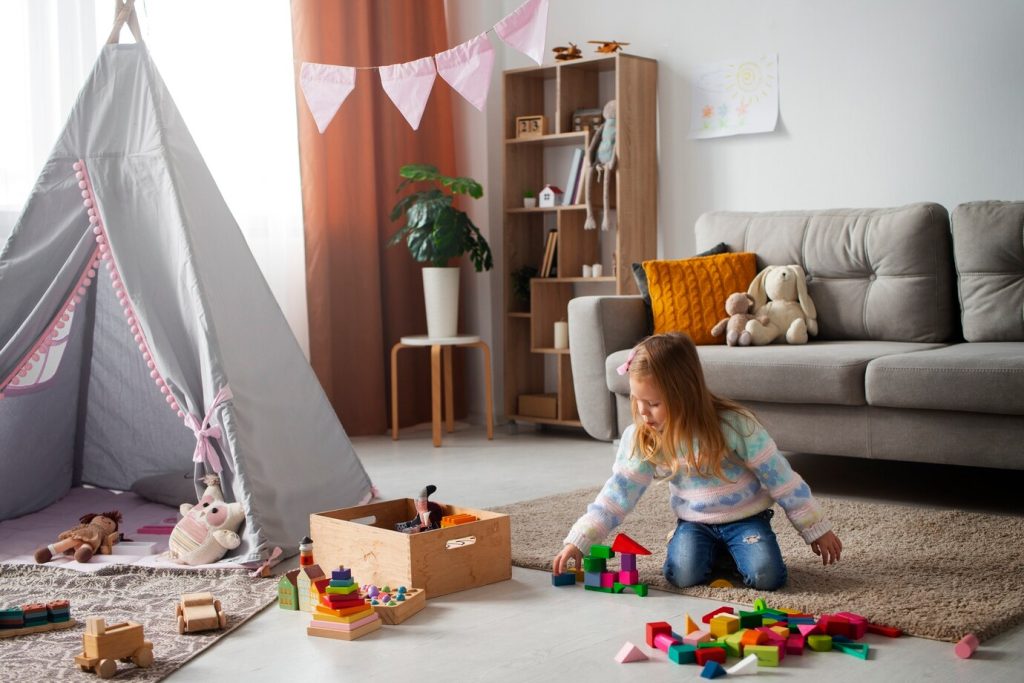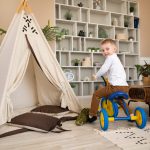Designing a child’s room is a delightful challenge, blending creativity, functionality, and a touch of magic. Whether you’re decorating for a toddler or a pre-teen, creating a space that’s both inspiring and practical can foster their growth and happiness. Let’s explore the essentials of designing a dreamy child’s room, from choosing the right colors to selecting decorative items that spark joy.

1. Design Layout: Function Meets Fun
The foundation of a well-designed child’s room is its layout. Here are a few key considerations:
- Flexible Zones: Create distinct areas for sleeping, playing, studying, and storage. This helps in organizing the room and allows for easy adaptation as the child grows.
- Safe and Spacious: Ensure the room has enough space to move around safely. Avoid sharp corners and use furniture with rounded edges.
- Multi-functional Furniture: Opt for furniture that can grow with your child. Beds with storage drawers, adjustable study tables, and convertible cribs are great investments.
2. Color Selection: Setting the Mood
Colors play a significant role in influencing a child’s mood and behavior. Here are some tips for selecting the right palette:
- Soft Neutrals and Pastels: Light blues, soft pinks, and mint greens create a calming environment. These colors are versatile and can be paired with brighter accents.
- Bright and Bold: For a lively and energetic feel, incorporate bright colors like yellows, oranges, and reds. Use these as accent colors to avoid overwhelming the space.
- Theme-based Colors: If your child loves a particular theme, like outer space or under the sea, choose colors that complement that theme. Dark blues for a space theme or various shades of blue and green for an ocean theme can be very effective.
3. Decorative Items: Adding Personality and Charm
Decorative items are the finishing touches that bring a child’s room to life. Here are some ideas:
- Wall Art and Decals: Personalized wall art or decals can reflect your child’s interests and add a whimsical touch. Removable wall stickers are great for changing themes as they grow.
- Lighting: Choose fun and functional lighting. Nightlights, string lights, and themed lamps can create a cozy atmosphere and also provide comfort during the night.
- Rugs and Cushions: Soft rugs and colorful cushions add texture and comfort. They can also be used to create a reading nook or a play area.
- Shelves and Storage: Creative storage solutions like floating shelves, toy bins, and storage benches keep the room tidy. Displaying books and toys can also serve as decoration.
- Bedding: Themed bedding sets are an easy way to reinforce the room’s theme. Look for bedding that is both comfortable and easy to wash.
- DIY Projects: Personalize the space with DIY projects. Hand-painted furniture, homemade mobiles, or custom name signs add a unique touch.
4. Incorporating Educational Elements
A child’s room should also be a place of learning and discovery. Consider these elements
- Interactive Wall: Create a chalkboard or whiteboard wall where your child can draw, write, and express their creativity.
- Educational Toys: Incorporate toys that encourage learning and development. Puzzles, building blocks, and art supplies can be both decorative and educational.
- Books and Reading Nooks: Designate a cozy corner with bookshelves and comfortable seating to encourage a love for reading.
5. Safety First
While aesthetics and functionality are important, safety should always come first:
- Furniture Anchors: Secure heavy furniture to the walls to prevent tipping.
- Non-toxic Materials: Use non-toxic paints and materials to ensure a healthy environment.
- Cord Safety: Keep window blind cords and electrical cords out of reach.
Final Thoughts
Designing a child’s room is an opportunity to create a space that nurtures their imagination, supports their growth, and provides a safe haven. By carefully considering the design layout, color palette, and decorative elements, you can craft a room that is as unique and special as your child. Remember, the best rooms evolve with your child’s changing interests and needs, so embrace flexibility and have fun with the process!




